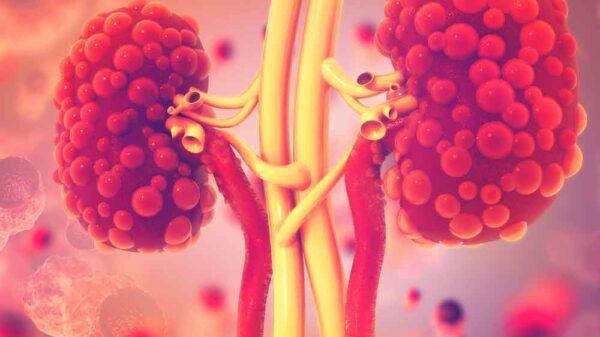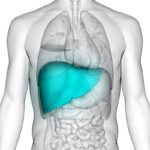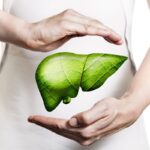Do you think you might have pancreatic cancer jaundice? This type of cancer makes up around 3% of all cancer cases in the USA. Like other types of cancer, it’s important to know details like the signs/symptoms, causes, and treatments. The pancreas is a gland organ located in the abdomen. Like other organs, there are different diseases like cancer that can affect its function. So it’s critical to know what pancreatic cancer is all about. It also helps to know about various complications like jaundice. This condition is also linked to other health conditions like liver cirrhosis but can also appear among patients with other conditions like pancreatic cancer.
Jaundice is a condition that involves a buildup of a bile-based substance known as “bilirubin.” When there’s extra bilirubin in the bloodstream it results in symptoms like yellowish skin and eyeballs. This condition often doesn’t need treatment, although cancer is a serious health condition so it can result in major complications like jaundice that might require treatments. What’s most important is to know the symptoms so your doctor can do a physical exam and order tests to determine whether or not you indeed have jaundice. This can help you get the treatment you need if you have the condition.
What Exactly Is Pancreatic Cancer?
The pancreas is a gland organ that’s located in the abdominal region. Meanwhile, pancreatic cancer is a disease that involves cancer cells forming in the organ’s tissues. The gland is located in front of a person’s spine and behind their stomach. The job of the pancreas is to make digestive juices/hormones for controlling glucose (blue sugar).
There are different cells that produce juices and hormones. In most cases, pancreatic cancers are in the hormone-making cells. However, sometimes they form in the cells that make digestive juices.
There are various pancreatic cancer symptoms that are linked to serious disease. They include:
- Loss of appetite
- Abdominal pain (middle/upper) and back
- Depression
- Weight loss
- Fatigue
- Jaundice (yellow skin/eyeballs)
If you experience multiple symptoms you should contact your doctor immediately. He/She can then do a physical exam and order tests to determine if you have pancreatic cancer or another health condition is causing the symptoms.
There are also various risk factors you should be aware of including:
- Pancreatitis
- Obesity
- Genetic disorders
- Long-term diabetes
- Smoking
The diagnosis process involves a physical exam and a review of the patient’s medical history. The physical will likely order many tests to figure out the cause of the symptoms. They include X-ray/CT/MRI ultrasound. The doctor might also order a biopsy to examine a small piece of the pancreas tissue to determine if it’s been affected by the disease.
There are various treatments for pancreatic cancer. They include radiation, chemotherapy, and surgery. Radiation involves X-rays to kill cancer cells, chemotherapy includes strong drugs for cancer treatment, and surgery involves removing the cancer tumors.
The American Cancer Society reports the survival rate is about one-quarter of cancer patients within one year after being diagnosed with the disease. Meanwhile, around 8% are alive 5 years after diagnosis. As always, it’s important to talk to your doctor about treatment options.
Pancreatic Cancer and Jaundice: What’s The Link?
Jaundice is one of the various signs/symptoms of pancreatic cancer. It involves a substance known as “bilirubin” that’s made when oxygen-carrying red blood cells (RBCs) get broken down. This is part of the recycling of damaged RBCs.
The bloodstream moves bilirubin to the liver where it connects to bile. Then it moves inside the bile ducts to the digestive tract. The body then removes it. The problem is when the body can’t get rid of the substance effectively it results in a blood buildup and collects in the patient’s skin. This causes jaundice.
This condition can cause changes to the color of the body’s wastes. That’s because it contains less bilirubin that usually gets removed from the body. When bilirubin levels become too high.
Various substances that get formed through bile’s breakdown increase, which can cause symptoms like itching. However, there are few other symptoms besides this one. The situation is different among newborns. This can result in serious conditions like brain damage.
There might be other symptoms besides jaundice linked to other diseases. They include liver disease. For example, symptoms of this serious disease include vomiting, nausea, spiderweb-like blood vessels, stomach pain, and a brain disorder known as HE.
Pancreatic cancer is another common cause of jaundice. This condition might show up as an early stage of cancer. However, it might also appear in late-stage pancreatic cancer. This is due to factors like blocked bile duct or liver malfunctioning. This results from bile not draining properly from the body.
Sometimes the cancer is caused by a “biliary stent” tube being inserted into the bile duct. This is used to treat jaundice but sometimes the cancer cells return and block the tube. This also results in jaundice returning. A doctor/nurse will determine if you need a biliary stent after a jaundice diagnosis.
Top Foods for Pancreatic Cancer
High-fiber starches
Make sure to go with foods that have both features. They include: oatmeal, brown rice, quinoa, beans, and potatoes. These options provide other nutrients like Vitamin B known as folate. This is a critical vitamin to help reduce pancreatic cancer risk.
Lean protein
Protein provides several health benefits. They include repairing damaged cells and boosting the immune system. Make sure to pick proteins that are easy to digest including:
- Nut Butters
- Fish
- Tofu
- Eggs
- Chicken
Healthy fats
When consuming fat it’s important to go with healthy fats. That includes omega-3s. Foods with healthy fats include fatty fish, nuts/seeds, avocado, coconut, and olive oil. Make sure to go with unsaturated fat instead of saturated/trans fat.
One of the effects of pancreatic cancer is it lowers the gland’s ability to produce enough insulin. This can affect blood sugar levels. It might trigger diabetes, which can boost the patient’s risk of pancreatic cancer.
Green tea
This is the highest-antioxidant teas among processed varieties. Green tea is high in chemical compounds known as “polyphenols,” which are believed to have anti-cancer features. Other options include black and white tea. In fact, white tea is unprocessed tea that’s the highest-antioxidant. Green tea might also provide other health benefits related to blood pressure, blood sugar, and weight loss.
Low-sugar
If you have pancreatic cancer and diabetes it’s important to go with low-sugar/high-fiber foods. Make sure to limit/ditch white sugar, refined grains, and other blood sugar-spiking foods. This can cause various health issues like inflammation.
Fruits/Vegetables
These are foods you should be eating anyway. However, it’s also important to consume these foods if you have pancreatic cancer. Try to go with cooked veggies if you have problems digesting raw ones.
Other options include:
- Citrus fruits
- Cruciferous vegetables
- Leafy greens
- Berries
These foods are loaded with vitamins, minerals, enzymes, antioxidants, etc. so they’re a good option for treating pancreatic cancer jaundice.























